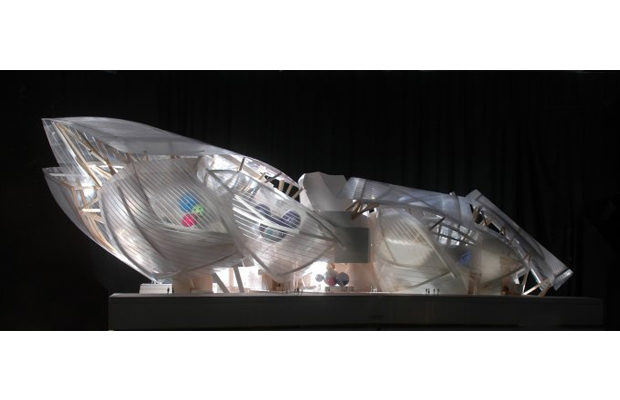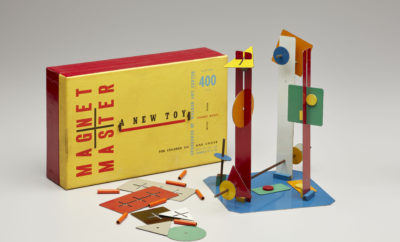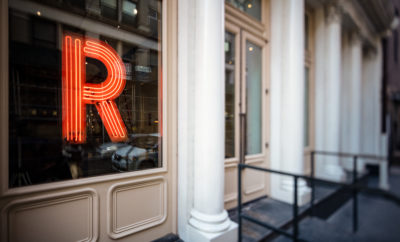
Architecture
Architecture as Art and Adventure
In Los Angeles, A Frank Gehry Retrospective

FONDATION LOUIS VUITTON FINAL DESIGN MODEL, 2004–14, BY GEHRY PARTNERS, LLP
It’s not often possible to speak in absolutes, but it is safe to say that no other living architect has transformed the field as much as Frank Gehry has. In more than six decades of practice (he opened his Santa Monica, California, office in 1962), Gehry has changed not just the aesthetics of architecture, but also the way in which architecture affects society. His most prominent buildings—the Guggenheim in Bilbao and the Walt Disney Concert Hall in Los Angeles (to name just two)— are powerful landmarks of our time, expressing more than the architect’s particular vision by expressing the cultural aspirations of a generation.
The exhibition Frank Gehry, which opens September 13 at the Los Angeles County Museum of Art, offers a sweeping survey of the Pritzker Prize-winning architect’s career as it has spanned the decades from his own corrugated metal and chain link-clad house in Santa Monica, which dates to 1978, to the high-profile and large-scale work of today. Born in Canada in 1929, Gehry moved to Los Angeles with his family in 1947 and has remained there since, his name in some ways becoming synonymous with the city’s contemporary architecture. Gehry did not set out to become an architect, though he eventually did graduate from the University of Southern California’s architecture school. “Architecture was by chance for me,” he said in a 2014 interview at the time of the opening of his building for the Fondation Louis Vuitton in Paris. Indeed, though he has become the most recognized architect of his generation, he has often said that he thinks more like a sculptor. His office, on the other hand, has been instrumental in the use of technology in design and fabrication.
The retrospective exhibition—it debuted at the Centre Pompidou last year but is much expanded here—looks at more than sixty of Gehry’s projects and features more than two hundred drawings, some seen publicly for the first time, as well as sixty-five scale models, and has a dual focus on urbanism and technology. It runs through March 20, 2016.
On October 25, the Museum of California Design (a museum without a permanent home) will honor Gehry with its 2015 Henry Award for Outstanding Contribution to Design by a Californian. The ceremony will take place at JF Chen at 1135, a new exhibition space in LA’s emerging Highland Avenue Arts District and will be accompanied by an exhibition entitled Frank Gehry: Forty Years of Product Design 1972–2012. The exhibition will be on view for just a week but will provide an intriguing counterpoint to the LACMA show by displaying furniture, lighting, objects, and jewelry. lacma.org mocad.org












